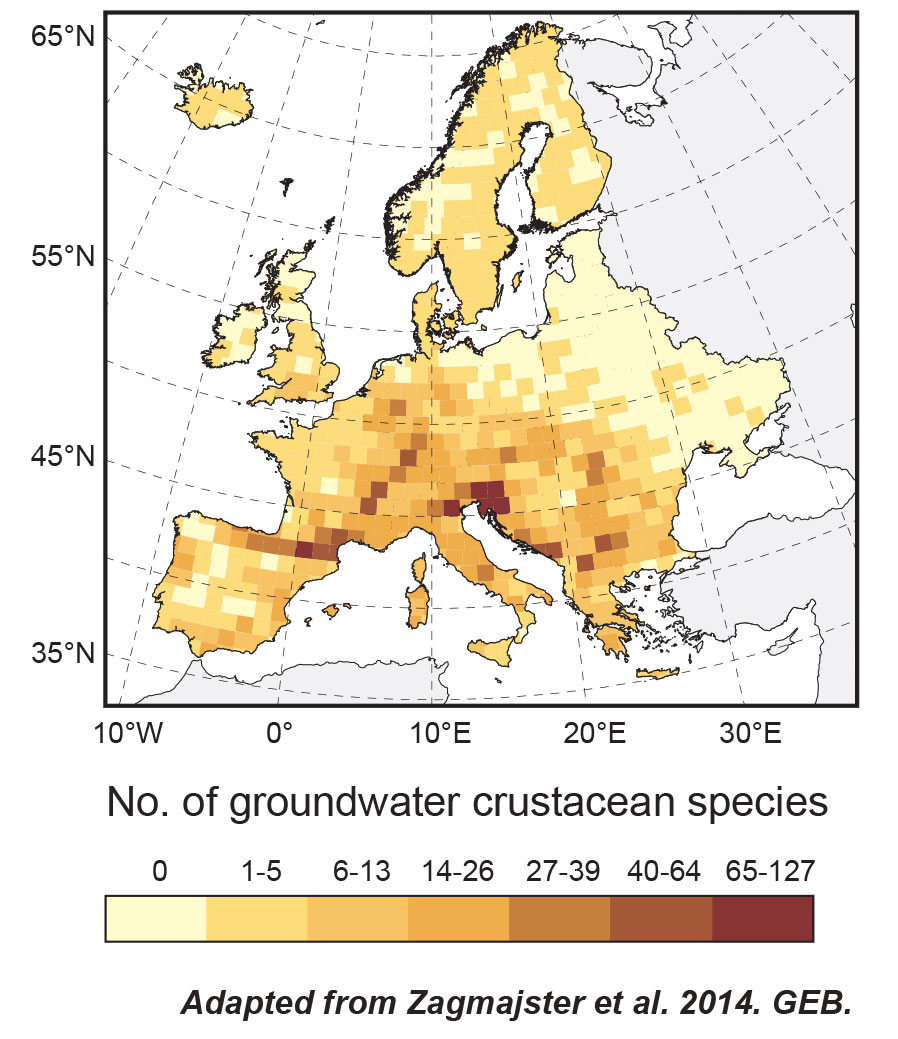Species are not evenly distributed in space due to the combined effects of speciation, extinction and dispersion. In macroecology, the central question is how these processes interact with present and past environmental factors and create existing patterns of species richness. Subterranean environment is buffered from daily and annual climatic fluctuations, dispersal is low and communities are simple. Therefore, community composition is relatively stable and noise due to stochastic events is diminished.
We are particularly interested in three questions. First, to quantify subterranean diversity using different measures of diversity, like number of species per area, or functional and phylogenetic diversity. Using spatial statistics, we model present and past environmental data to pinpoint how diversity patterns of subterranean faunas have emerged. Second, we study range sizes of selected subterranean species. We combine ecological modelling and molecular phylogeography to understand how ranges evolved, but also to assess how endangered subterranean species are. Third, we are interested in how subterranean species interact with each other and how these interactions affect community structure across different spatial scales.
Our studies span from local to continental scale. At the heart of all these studies are the SubBio Database and the European Groundwater Crustacea Database, both maintained by our team members.


